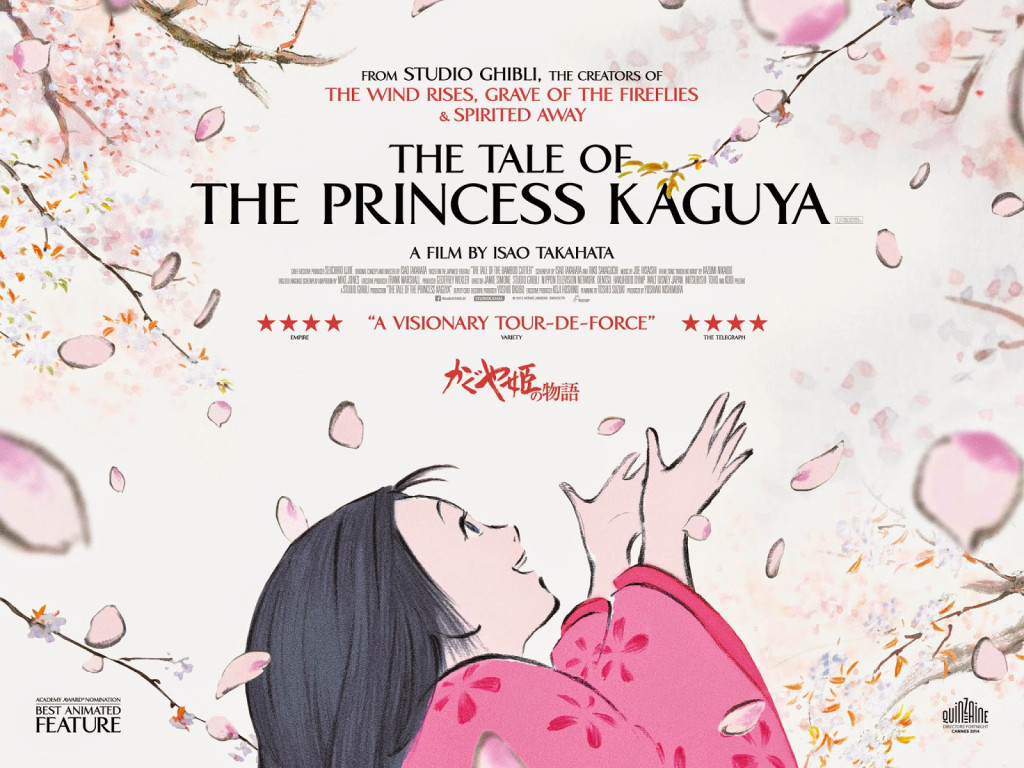Writer: Isao Takahata, Riko Sakaguchi
Cast: Chloe Grace Moretz, James Caan, Mary Steenburgen, Lucy Liu, Darren Criss (English language version), Aki Asakura, Tatasuya Nakadai, Takeo Chii, Nobuko Miyamoto
Cert: U
Running time: 137mins
Year: 2013

The lowdown: 80 year old Studio Ghibli co-founder Isao Takahata’s probable swansong happens to be his finest movie. A bold, enchanting, retelling of the one thousand year old Japanese folktale The Bamboo Cutter, it’s as fresh as Frozen and as visually daring as the best of Pixar. Magical, thrilling for all ages and captivating throughout, if Studio Ghibli does shut up shop for good now Hayao Miyazaki has retired, this is a wonderful film to bow out on.
The full verdict: Less well-known than Hayao Miyazaki, Isao Takahata is still one of Japan’s finest animated filmmakers. He also works at a pace best described as unhurried.
Fourteen years separate this movie and his last full length feature, My Neighbours the Yamadas. The original plan of simultaneously releasing The Tale of Princess Kaguya and Miyazaki’s final film The Wind Rises was also scuppered as Takahata continued tinkering away as the deadline came and went.
Thankfully, the end result was worth the wait (longer for Western audiences, the film having been released in Japan back in 2013).
The story is simple. In a forest a kindly old wood cutter discovers a tiny princess born from a bamboo shoot. When returning with her to his wife and home, the princess transforms into a baby and the childless couple cares for her as their own.
The bamboo trees gush forth riches with which to provide this princess a life of luxury. But, as Kaguya matures, she begins to realise the finest houses can be prisons if life is kept beyond reach.
Takahata previously directed episodes of cartoon adaptations of Heidi and Anne of Green Gables, both beloved in Japan. The same joy of nature in those is captured here, as the tomboyish princess rough houses with local peasant kids through beautiful water colour landscapes.
This water colour style is a reminder of how standard CG animation has become. Echoing the soft-edged pencil style of The Snowman, or in its wilder moments the weirdness of Bill Plympton, one particular moment as Kaguya flees a coming-out party is an exhilarating riot of brushstrokes and liquid movement.
Leisurely paced and at 137 minutes Studio Ghibli’s longest movie, The Tale of Princess Kaguya remains a delight to watch. Takahata’s trademark broad humour provides a healthy ration of belly laughs, particularly when Kaguya resists Heian era fashion of plucking eyebrows and blackening teeth.
The fairytale convention of the wrong suitors sees five (ig)noble men vying for the princess’ hand, with comic interludes depicting their attempts to complete impossible tasks
A more serious Ghibli plot thread rises when Kaguya rages against an oppressive society’s shackles, and the studio’s motif of flight is visited twice. Once euphoric when Kaguya and a childhood sweetheart literally take to the heavens and the next heartbreaking as it becomes clear Kaguya’s greatest enemy is time.
Believe the Best Picture Oscar nomination and the universal praise. The Tale of Princess Kaguya is a joy.
Rob Daniel
[youtube id=”ILVGna1QMkc”]





